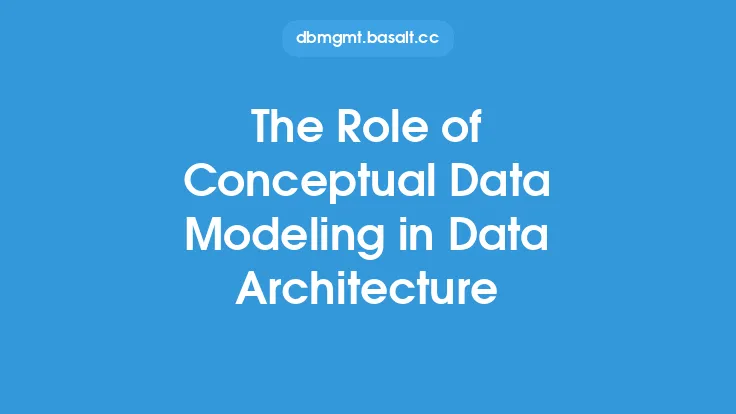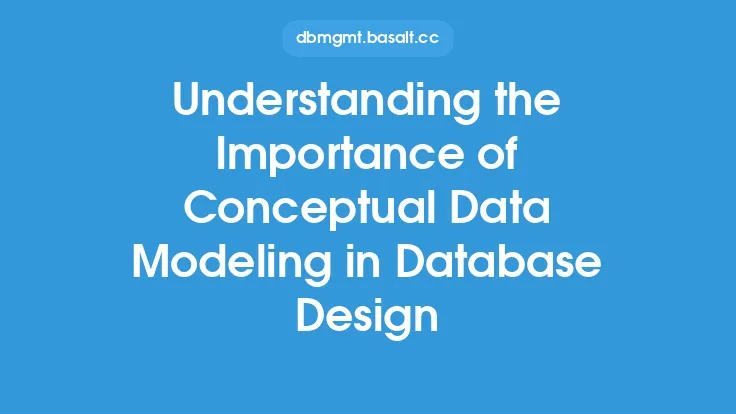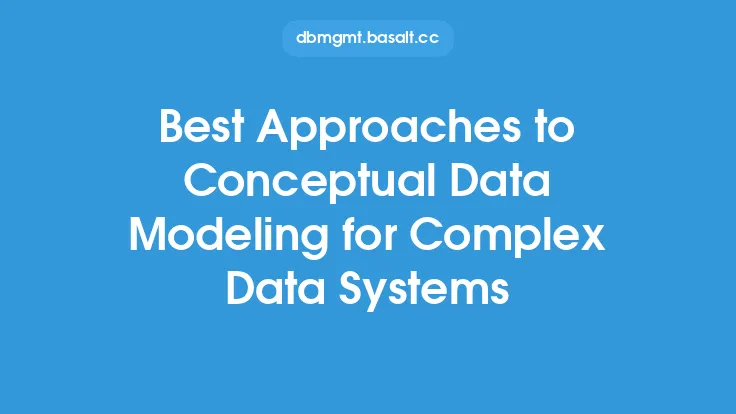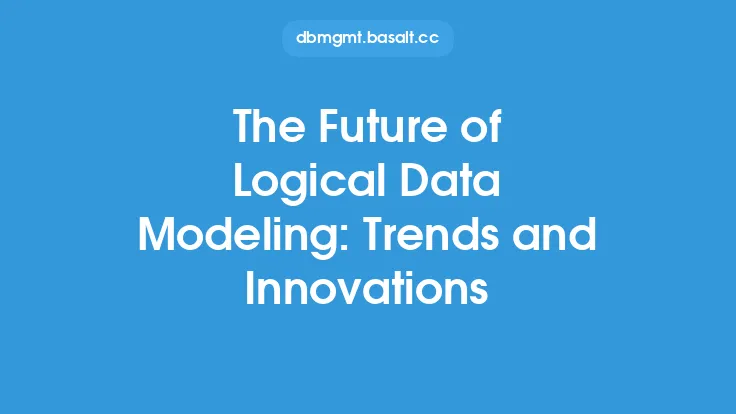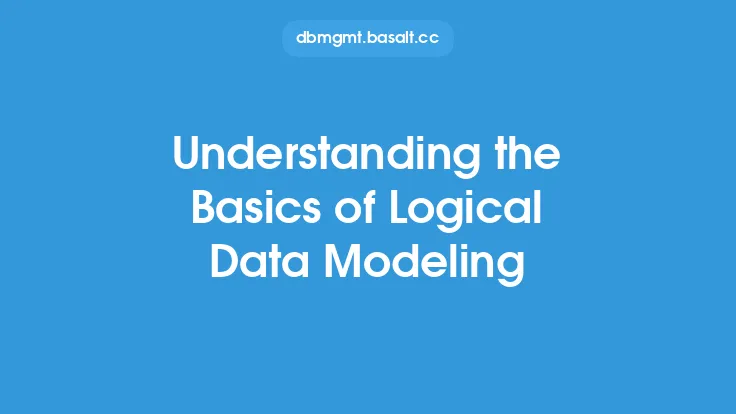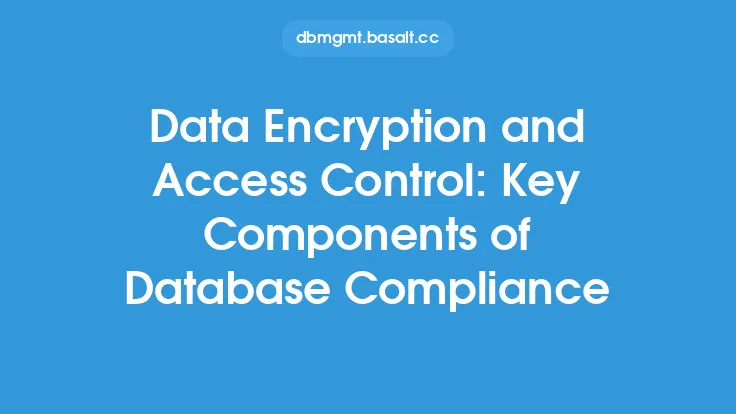Conceptual data modeling is a crucial step in the data modeling process, as it lays the foundation for the development of a robust and scalable data architecture. At its core, conceptual data modeling involves identifying and representing the key concepts and relationships within a domain, without worrying about the physical implementation details. In this article, we will delve into the key components of conceptual data modeling, exploring the essential elements that make up a conceptual data model.
Introduction to Conceptual Data Modeling Components
Conceptual data modeling components are the building blocks of a conceptual data model. These components can be thought of as the "things" of interest within a domain, and the relationships between them. The key components of conceptual data modeling include entities, attributes, relationships, and constraints. Each of these components plays a vital role in defining the structure and meaning of the data within a domain.
Entities
Entities are the core components of a conceptual data model, representing the key concepts or "things" of interest within a domain. Entities can be thought of as objects, concepts, or events that have meaning and relevance within a particular context. Examples of entities might include customers, orders, products, or employees. Entities are typically represented as nouns, and are often the central focus of a conceptual data model. When defining entities, it is essential to consider their properties, behaviors, and relationships with other entities.
Attributes
Attributes are the characteristics or properties of an entity, providing additional information about the entity and its meaning within the domain. Attributes can be thought of as the "descriptors" of an entity, and are often used to distinguish one entity from another. Examples of attributes might include a customer's name, address, or date of birth. Attributes can be further categorized into different types, such as simple attributes, composite attributes, and multivalued attributes. Simple attributes are single values, while composite attributes are made up of multiple values. Multivalued attributes, on the other hand, can have multiple values for a single entity.
Relationships
Relationships represent the connections or associations between entities within a conceptual data model. Relationships can be thought of as the "glue" that holds the entities together, defining how they interact and relate to one another. There are several types of relationships that can exist between entities, including one-to-one, one-to-many, and many-to-many relationships. One-to-one relationships occur when a single entity is related to only one other entity. One-to-many relationships occur when a single entity is related to multiple other entities. Many-to-many relationships, on the other hand, occur when multiple entities are related to multiple other entities.
Constraints
Constraints are the rules or limitations that govern the relationships between entities within a conceptual data model. Constraints can be thought of as the "rules of the game," defining what is and is not allowed within the domain. Examples of constraints might include uniqueness constraints, which ensure that each entity has a unique identifier, or referential integrity constraints, which ensure that relationships between entities are consistent and valid. Constraints are essential for maintaining data consistency and preventing data anomalies.
Conceptual Data Modeling Notations
Conceptual data modeling notations are the visual representations of the components and relationships within a conceptual data model. There are several notations that can be used to represent conceptual data models, including Entity-Relationship Diagrams (ERDs) and Object-Role Modeling (ORM) diagrams. ERDs are a popular notation for representing conceptual data models, using entities, attributes, and relationships to define the structure and meaning of the data. ORM diagrams, on the other hand, use objects, roles, and relationships to define the structure and meaning of the data.
Best Practices for Conceptual Data Modeling
When creating a conceptual data model, there are several best practices to keep in mind. First, it is essential to involve stakeholders and subject matter experts in the modeling process, to ensure that the model accurately reflects the business requirements and domain knowledge. Second, it is essential to keep the model simple and intuitive, avoiding unnecessary complexity and ambiguity. Third, it is essential to use a consistent notation and terminology, to ensure that the model is easy to understand and communicate. Finally, it is essential to validate and refine the model, to ensure that it accurately reflects the domain and meets the business requirements.
Common Challenges in Conceptual Data Modeling
Despite its importance, conceptual data modeling can be a challenging and complex process. One common challenge is ensuring that the model is accurate and complete, reflecting all the relevant entities, attributes, and relationships within the domain. Another challenge is avoiding ambiguity and confusion, ensuring that the model is clear and unambiguous. Additionally, conceptual data modeling often requires a deep understanding of the business requirements and domain knowledge, which can be difficult to obtain. Finally, conceptual data modeling can be a time-consuming and resource-intensive process, requiring significant effort and expertise.
Conclusion
In conclusion, conceptual data modeling is a critical step in the data modeling process, laying the foundation for the development of a robust and scalable data architecture. The key components of conceptual data modeling, including entities, attributes, relationships, and constraints, provide the essential elements for defining the structure and meaning of the data within a domain. By following best practices and using a consistent notation and terminology, conceptual data models can be created that accurately reflect the business requirements and domain knowledge. While conceptual data modeling can be a challenging and complex process, the benefits of a well-designed conceptual data model make it an essential investment for any organization seeking to manage its data effectively.
